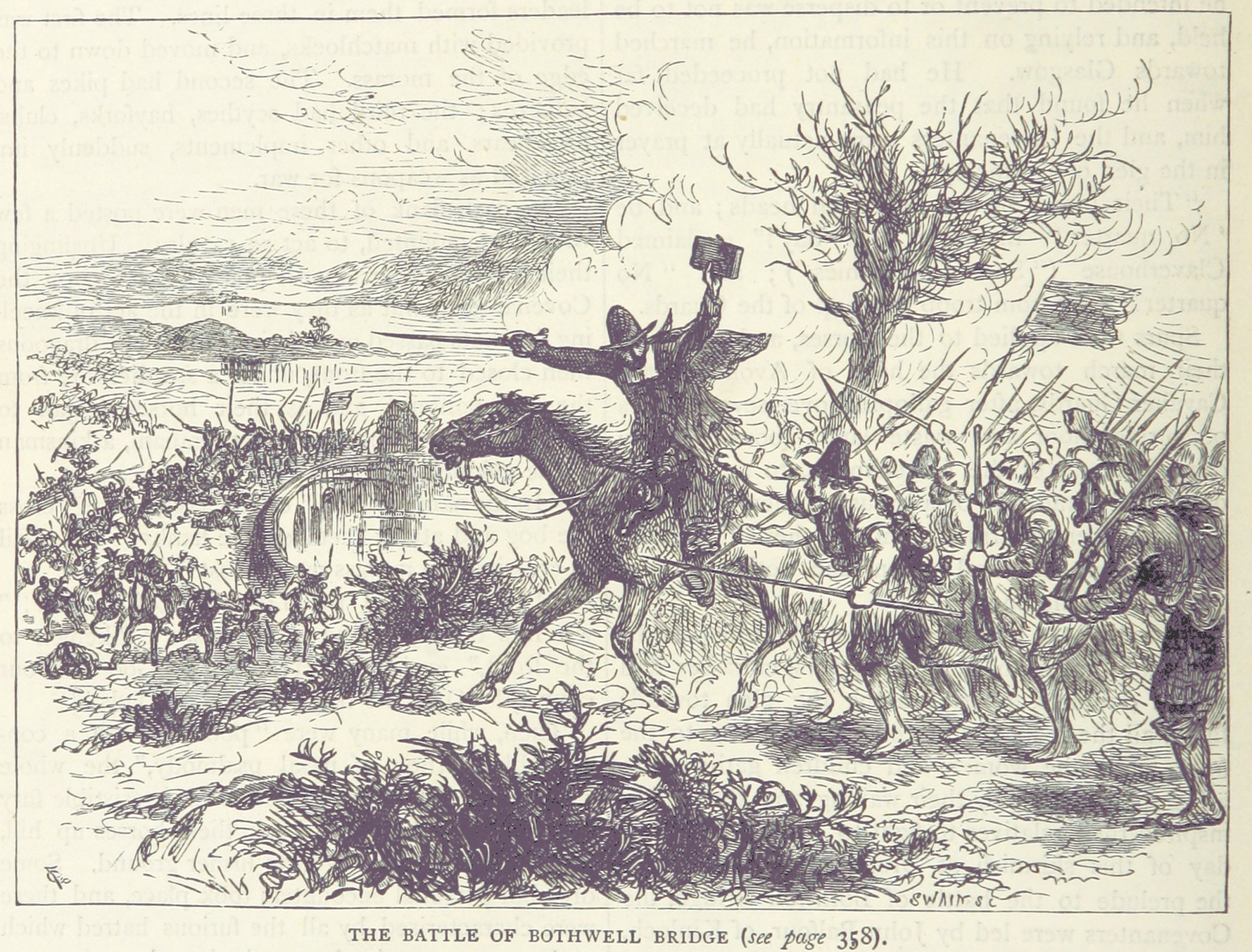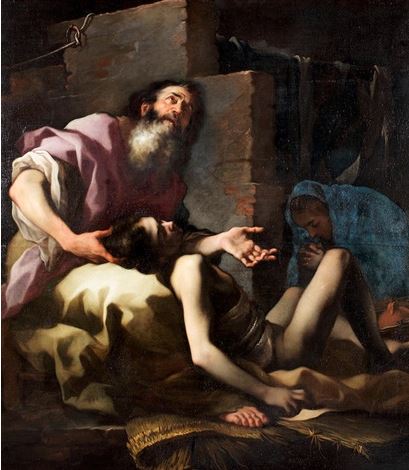|
Pietro Negri
Pietro Negri (1628, Venice - 31 May 1679, Venice) was an Italian painter in the Baroque style who belonged to the so-called "tenebrosi" (dark or gloomy ones). Biography He was likely born in Venice. Early sources assumed that he was the son of a sculptor named Domenico Negri, but his father's name is given as Lunardo in some documents and Francesco in others. His first art lessons came from Matteo Ponzone. Later, he worked with Francesco Ruschi. In his early days, much of his work is difficult to distinguish, stylistically, from Antonio Zanchi. His first verified work is from 1658, when he signed an engraving on the frontispiece of ''Antioco'' by the poet, Nicolò Minato. The paintings attributed to him, prior to the 1660s, are all missing. A painting of ''Antonio e Cleopatra'' is dated from c.1664. In 1670, he produced the ''Albero serafico dei Ordini francescani'' (Seraphic Tree of the Franciscans), currently at the basilica of Santa Maria Gloriosa dei Frari. One of his b ... [...More Info...] [...Related Items...] OR: [Wikipedia] [Google] [Baidu] |
Saint Rocco
Roch (lived c. 1348 – 15/16 August 1376/79 (traditionally c. 1295 – 16 August 1327, also called Rock in English, is a Catholic saint, a confessor whose death is commemorated on 16 August and 9 September in Italy; he is especially invoked against the plague. He has the designation of Rollox in Glasgow, Scotland, said to be a corruption of Roch's Loch, which referred to a small loch once near a chapel dedicated to Roch in 1506. He is a patron saint of dogs, invalids, falsely accused people, bachelors, and several other things. He is the patron saint of Dolo (near Venice) and Parma, as well as Casamassima, Cisterna di Latina and Palagiano (Italy). He is also the patron saint of the town of Albanchez, in Almeria, southern Spain. Saint Roch is known as "São Roque" in Portuguese, as "Sant Roc" in Catalan, as "San Roque" in Spanish (including in former colonies of the Spanish colonial empire such as the Philippines) and as "San Rocco" in Italian. Etymology Roch is given diffe ... [...More Info...] [...Related Items...] OR: [Wikipedia] [Google] [Baidu] |
Italian Painters
Following is a list of Italian painters (in alphabetical order) who are notable for their art. A *Niccolò dell'Abbate (1509/12–1571) *Giuseppe Abbati (1836–1868) * Angiolo Achini (1850–1930) * Pietro Adami (c. 1730) *Livio Agresti (1508–1580) *Giorgio Matteo Aicardi (1891–1985) *Francesco Albani (1578–1660) * Giacomo Alberelli (1600–1650) *Mariotto Albertinelli (1474–1515) * Ambrogio Antonio Alciati (1878–1929) *Domenico Alfani (1479/1480–c. 1553) *Girolamo Alibrandi (1470–1524) * Silvio Allason (1845–1912) *Alessandro Allori (1535–1607) *Cristofano Allori (1577–1621) *Marco Almaviva (born 1934) *Altichiero (1330–1390) *Jaber Alwan (born 1948) *Jacopo Amigoni (1682–1752) * Giuseppe Amisani (1881–1941) * Andrea da Murano (active 1463–1502) * Andrea di Bartolo (1360/70–1428) *Fra Angelico (1387–1455) *Sofonisba Anguissola (1532–1625) *Pietro Annigoni (1910–1988) * Andrea Ansaldo (1584–1638) *Michelangelo Anselmi (c. 1492–c. 1554 ... [...More Info...] [...Related Items...] OR: [Wikipedia] [Google] [Baidu] |
1679 Deaths
Events January–June * January 24 – King Charles II of England dissolves the "Cavalier Parliament", after nearly 18 years. * February 3 – Moroccan troops from Fez are killed, along with their commander Moussa ben Ahmed ben Youssef, in a battle against rebels in the Jbel Saghro mountain range, but Moroccan Sultan Ismail Ibn Sharif is able to negotiate a ceasefire allowing his remaining troops safe passage back home. * February 5 – The Treaty of Celle is signed between France and Sweden on one side, and the Holy Roman Empire, at the town of Celle in Saxony (now in Germany). Sweden's sovereignty over Bremen-Verden is confirmed and Sweden cedes control of Thedinghausen and Dörverden to the Germans. * February 19 – Ajit Singh Rathore becomes the new Maharaja of the Jodhpur State a principality in India also known as Marwar, now located in Rajasthan state. * March 6 – In England, the " Habeas Corpus Parliament" (or "First Exclusion Parliame ... [...More Info...] [...Related Items...] OR: [Wikipedia] [Google] [Baidu] |
1628 Births
Sixteen or 16 may refer to: * 16 (number), the natural number following 15 and preceding 17 *one of the years 16 BC, AD 16, 1916, 2016 Films * ''Pathinaaru'' or ''Sixteen'', a 2010 Tamil film * ''Sixteen'' (1943 film), a 1943 Argentine film directed by Carlos Hugo Christensen * ''Sixteen'' (2013 Indian film), a 2013 Hindi film * ''Sixteen'' (2013 British film), a 2013 British film by director Rob Brown Music * The Sixteen, an English choir * 16 (band), a sludge metal band * Sixteen (Polish band), a Polish band Albums * ''16'' (Robin album), a 2014 album by Robin * 16 (Madhouse album), a 1987 album by Madhouse * ''Sixteen'' (album), a 1983 album by Stacy Lattisaw *''Sixteen'' , a 2005 album by Shook Ones * ''16'', a 2020 album by Wejdene Songs * "16" (Sneaky Sound System song), 2009 * "Sixteen" (Thomas Rhett song), 2017 * "Sixteen" (Ellie Goulding song), 2019 *"16", by Craig David from '' Following My Intuition'', 2016 *"16", by Green Day from ''39/Smooth'', 1990 *"16" ... [...More Info...] [...Related Items...] OR: [Wikipedia] [Google] [Baidu] |
Treccani
The ''Enciclopedia Italiana di Scienze, Lettere e Arti'' ( Italian for "Italian Encyclopedia of Science, Letters, and Arts"), best known as ''Treccani'' for its developer Giovanni Treccani or ''Enciclopedia Italiana'', is an Italian-language encyclopaedia. The publication ''Encyclopaedias: Their History Throughout The Ages'' regards it as one of the greatest encyclopaedias along with the ''Encyclopædia Britannica'' and others. History The first edition was published serially between 1929 and 1936. In all, 35 volumes were published, plus one index volume. The set contained 60,000 articles and 50 million words. Each volume is approximately 1,015 pages, and 37 supplementary volumes were published between 1938 and 2015. The director was Giovanni Gentile and redactor-in-chief . Most of the articles are signed with the initials of the author. An essay credited to Benito Mussolini entitled " The Doctrine of Fascism" was included in the 1932 edition of the encyclopedia, although ... [...More Info...] [...Related Items...] OR: [Wikipedia] [Google] [Baidu] |
Dizionario Biografico Degli Italiani
The ''Dizionario Biografico degli Italiani'' ( en, Biographical Dictionary of the Italians) is a biographical dictionary published by the Istituto dell'Enciclopedia Italiana, started in 1925 and completed in 2020. It includes about 40,000 biographies of distinguished Italians. The entries are signed by their authors and provide a rich bibliography. History The work was conceived in 1925, to follow the model of similar works such as the German '' Allgemeine Deutsche Biographie'' (1912, 56 volumes) or the British '' Dictionary of National Biography'' (from 2004 the ''Oxford Dictionary of National Biography''; 60 volumes). It is planned to include biographical entries on Italians who deserve to be preserved in history and who lived at any time during the long period from the fall of the Western Roman Empire The Western Roman Empire comprised the western provinces of the Roman Empire at any time during which they were administered by a separate independent Imperial court; in ... [...More Info...] [...Related Items...] OR: [Wikipedia] [Google] [Baidu] |
Tuberculosis
Tuberculosis (TB) is an infectious disease usually caused by ''Mycobacterium tuberculosis'' (MTB) bacteria. Tuberculosis generally affects the lungs, but it can also affect other parts of the body. Most infections show no symptoms, in which case it is known as latent tuberculosis. Around 10% of latent infections progress to active disease which, if left untreated, kill about half of those affected. Typical symptoms of active TB are chronic cough with hemoptysis, blood-containing sputum, mucus, fever, night sweats, and weight loss. It was historically referred to as consumption due to the weight loss associated with the disease. Infection of other organs can cause a wide range of symptoms. Tuberculosis is Human-to-human transmission, spread from one person to the next Airborne disease, through the air when people who have active TB in their lungs cough, spit, speak, or sneeze. People with Latent TB do not spread the disease. Active infection occurs more often in people wi ... [...More Info...] [...Related Items...] OR: [Wikipedia] [Google] [Baidu] |
Simone Brentana
Simone Brentana (1656 – 9 June 1742 )) was an Italian painter of the Baroque period, active in . He was born in Venice to Domenico Brentana, but became orphaned by age nine. After a prolonged desultory education in various fields including music, he trained as a painter in Venice with Pietro Negri, frequenting the , moving in 1685 to Verona, where most of his paintings are located. Among his pupil ... [...More Info...] [...Related Items...] OR: [Wikipedia] [Google] [Baidu] |
Rococo
Rococo (, also ), less commonly Roccoco or Late Baroque, is an exceptionally ornamental and theatrical style of architecture, art and decoration which combines asymmetry, scrolling curves, gilding, white and pastel colours, sculpted moulding, and '' trompe-l'œil'' frescoes to create surprise and the illusion of motion and drama. It is often described as the final expression of the Baroque movement. The Rococo style began in France in the 1730s as a reaction against the more formal and geometric Louis XIV style. It was known as the "style Rocaille", or "Rocaille style". It soon spread to other parts of Europe, particularly northern Italy, Austria, southern Germany, Central Europe and Russia. It also came to influence the other arts, particularly sculpture, furniture, silverware, glassware, painting, music, and theatre. Although originally a secular style primarily used for interiors of private residences, the Rococo had a spiritual aspect to it which led to its widespread us ... [...More Info...] [...Related Items...] OR: [Wikipedia] [Google] [Baidu] |
1629–1631 Italian Plague
The Italian Plague of 1629–1631, also referred to as the Great Plague of Milan, was part of the second plague pandemic that began with the Black Death in 1348 and ended in the 18th century. One of two major outbreaks in Italy during the 17th century, it affected northern and central Italy and resulted in at least 280,000 deaths, with some estimating fatalities as high as one million, or about 35% of the population. The plague may have contributed to the decline of Italy's economy relative to those of other Western European countries. Outbreaks Thought to have originated in Northern France in 1623, the plague was carried throughout Europe as a result of troop movements associated with the Thirty Years' War and was allegedly brought to Lombardy in 1629 by soldiers involved in the War of the Mantuan Succession. The disease first spread to Venetian troops and in October 1629 reached Milan, Lombardy's major commercial centre. Although the city instituted a quarantine and limited a ... [...More Info...] [...Related Items...] OR: [Wikipedia] [Google] [Baidu] |
Scuola Grande Di San Rocco
The Scuola Grande di San Rocco is a building in Venice, northern Italy. It is noted for its collection of paintings by Tintoretto and generally agreed to include some of his finest work. History The building is the seat of a confraternity established in 1478, named after San Rocco, popularly regarded as a protector against plague. The members of the "Confraternity of St. Roch" were a group of wealthy Venetian citizens. The site they chose for their building is next to the church of San Rocco which houses the remains of the saint. In January 1515 the project of the building was entrusted to Bartolomeo Bon, although some authorities assign it to his son Pietro Bon. In 1524 his work was continued by Sante Lombardo, who, in turn, three years later was replaced by Antonio Scarpagnino. Following his death in 1549, the last architect to work on the edifice was Giangiacomo dei Grigi, finishing in September 1560. The design was similar to other ''scuole'' in Venice, characterized by ... [...More Info...] [...Related Items...] OR: [Wikipedia] [Google] [Baidu] |






_-_Il_Salone_Maggiore.jpg)